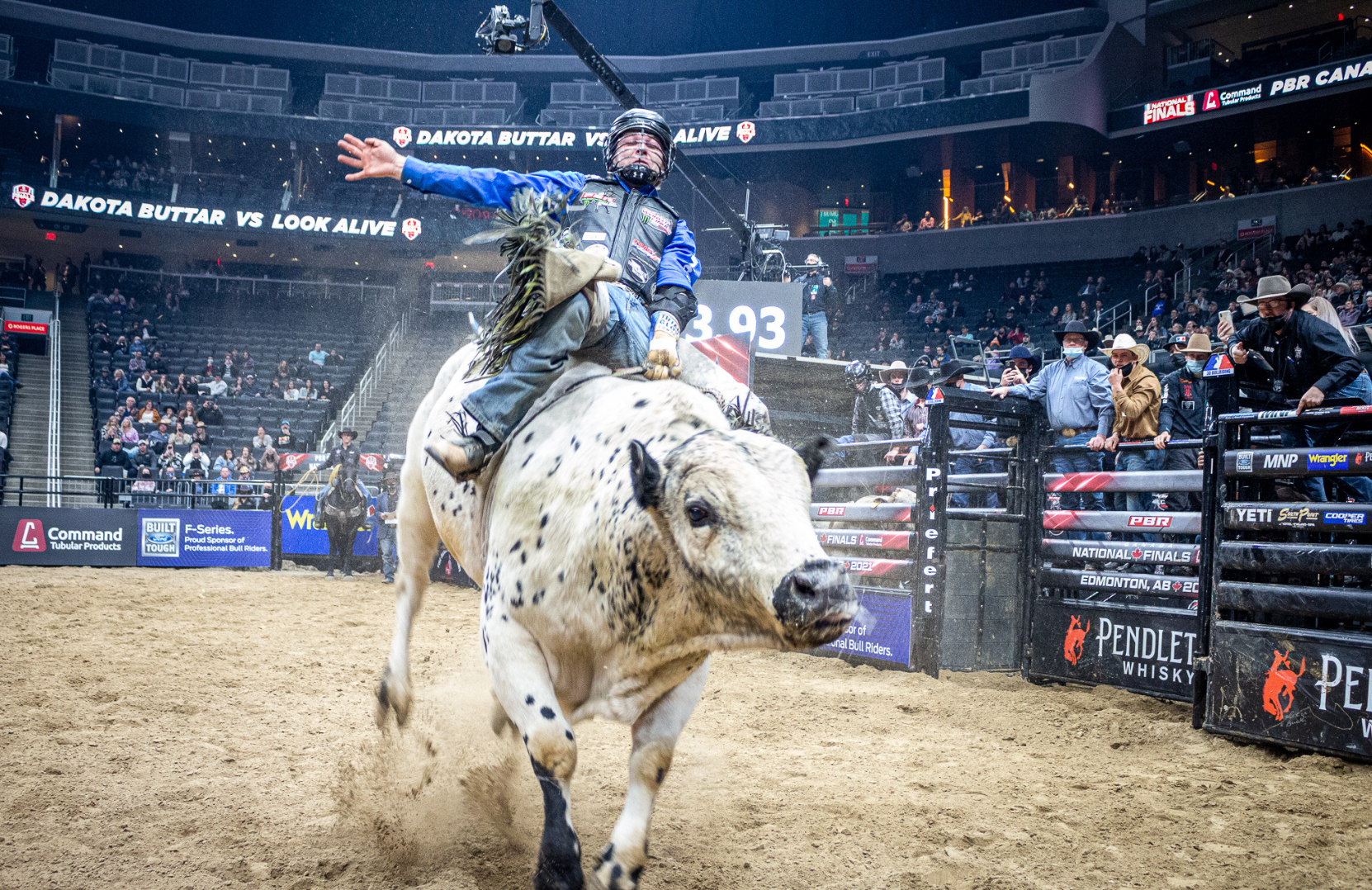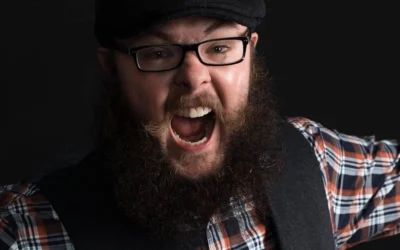Eight seconds. In bull riding, that is how long riders have to stay on a bull to get the maximum amount of points in competitions and how long a bull will have its maximum bucking strength. In any other scenario, eight seconds is short, but it’s the longest eight seconds of your life in bull riding. It is one of the most dangerous sports in the world, but still, thousands of cowboys make their living and support their families by riding bulls year after year.
Each year, the Professional Bull Riders (PBR) organization holds a championship race where top athletes battle it out to become Canada’s bull riding champion. Those eight seconds become more important than ever as the riders fight for the title and the prize money. This year Edmonton hosted the PBR National Finals at Rogers Place.
Although I have lived in Alberta for the past 18 years, I had never been to any rodeo events, so when the opportunity came up to go to the PBR championships, I jumped on it, and I was not disappointed.
In a matter of days, the Rogers Place ice rink was transformed into a traditional rodeo ground where top bull riders battled it out for the title of PBR Canada champion. Instead of the regular orange and blue, everyone was decked out in cowboy boots, plaid shirts, and jeans, and there was a sea of cowboy hats when I looked down on the crowd.
Cody Coverchuk from Meadow Lake, Saskatchewan had a rough start on Friday evening but redeemed himself on Saturday and was crowned PBR Canadian champion. He became one of the three multi-time national champions in history (he also won in 2018). He won by 23.34 points and took home $67,343.75.
Going into this competition, fellow Saskatchewan native Dakota Buttar (2020 PBR Canadian Champion) had the top scores and was a frontrunner in the competition. He competed with two major injuries and still managed to come in second place.
One thing that struck me is that all the contestants were world-class bull riders, but still, about 80 per cent didn’t make it to the eight-second mark. Along with being dangerous, this sport is hard. It takes immense mental strength, body awareness and coordination, and fearlessness to stay on the bull even if it could mean serious injury or even death.
Bull riding is unpredictable; it’s not like gymnastics or soccer, where you can plan out plays and practice routines. Each bull is different, and there is no way to predict their mood or behaviour. I don’t think bull riders are credited enough with having this fearlessness that is not needed in most mainstream sports.
On top of it being extremely taxing in every sense, bull riding also literally doesn’t pay off unless you have a good run and win a competition. The top athletes in soccer make upwards of 40 million CAD a year, and top hockey athletes such as Connor McDavid make around 15 million CAD a year, while it looks like Coverchuk will make under $200,000 this year from bull riding. These young men risk their lives for a sport they love and do not see near as much money as athletes from less dangerous sports.
It really comes down to the passion for bull riding. Many of the athletes we saw at the PBR grew up on ranches and farms in Alberta, Saskatchewan, the United States, and even Australia. This sport is their way of life, and how they passed the time as children. These athletes do it because they love the sport, have support from their friends and family back home, and enjoy pushing themselves to be better each day.
Nov. 13 was also a big day for a bull athlete, “Happy Camper,” who became “the first bovine athlete in Canadian history to be anointed the Canadian Global PBR Canada Bull of the Year multiple times,” according to a PBR news release.
An interesting fact about bull riding that I learned during my research is that the animals are also considered “athletes.” On the PBR website, there is a whole section dedicated to animal welfare. After reading this webpage, I discovered that some bulls are born as “bucking bulls” and that contrary to popular belief they aren’t forced to buck by inhumane practices. The bull riders are prohibited from using cattle prods and can only use a rope made out of poly rope to encourage the bull to kick up his hind legs. After practices and competitions, the bulls have physical therapy and are given roomy trailers to travel in. When the bulls retire after two or three years, they go to a ranch to live out the rest of their days. Sometimes they are also used for breeding.
Lastly, one of my favourite parts of the event was watching the bullfighters. Perhaps their job is as dangerous as riding the bulls. As soon as the rider gets bucked off the horse or dismounts, the fighters will distract the bull so that the rider can get to safety, and the bull calms down. In the past, these individuals were referred to as “rodeo clowns,” alluding to their role in distracting the bull. Tanner Byrne, Ty Prescott, and Brett Monea were the bullfighters at the PBR finals. In 2019 Byrne became the first individual to both ride and fight in the PBR Canada Finals. These three made such a great team, and whenever they weren’t fighting bulls, they were bantering with each other or cheering on their bull-riding brothers.
I had a great first introduction to rodeo and am eager to go back for both the sport, the people, and the atmosphere. All in all, it was a successful weekend, and all the cowboys put their best foot forward for a shot at becoming the PBR Canada Champion.





0 Comments